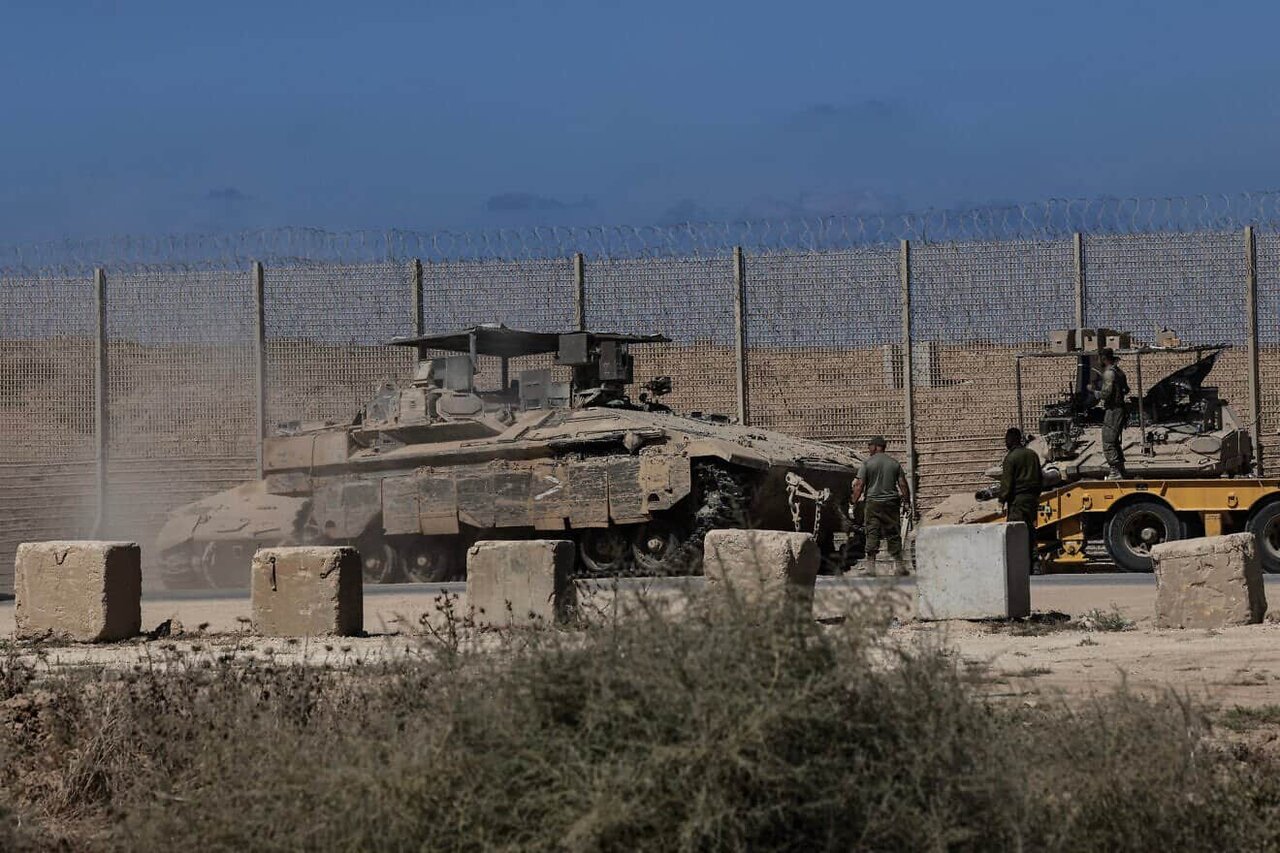Yellow line of death: Israeli strikes swallow Gaza wave by wave

TEHRAN – In the shadow of a supposed truce brokered under U.S. President Donald Trump's much-touted 20-point plan on October 10, Gaza remains a graveyard of shattered illusions.
Israeli strikes between November 22 and 28 killed at least 100 Palestinians — 24 in one of the deadliest 24-hour periods since the ceasefire began on November 22, four more on November 24, 33 in airstrikes on tents and homes in Khan Younis and Gaza City on November 25, one in central Gaza on November 26, and several more in drone and artillery attacks on November 27 and 28, including a child injured by tank fire in Rafah and a man killed in Bani Suheila.
These are not isolated mishaps but a grim continuation of a pattern: near-daily incursions that have claimed over 347 Palestinian lives since the ceasefire was announced, according to tallies by the Gaza Health Ministry and UN, with more than 70 children among the dead.
From Khan Younis to Beit Lahia, drones and artillery targeted civilians near the infamous “yellow line,” an arbitrary boundary that has morphed into a de facto license for lethal force.
On November 28, Israeli tank fire injured one child in Rafah, while airstrikes and drone attacks in the area killed at least one more, as forces demolished tunnels and pursued fighters in eastern Rafah.
Four days earlier, witnesses in Maghazi refugee camp recounted 18 hours of desperate digging through rubble, interrupted by warning fire from Israeli drones circling above.
The violations are systematic: the Gaza Media Office documented 497 breaches by November 22, including 228 bombings and raids beyond agreed lines. By November 28, observers updated the count to over 535, encompassing gunfire, shelling, and airstrikes across all five Gaza governorates.
In Khan Younis, tanks advanced 300 meters into restricted zones, razing homes in house-to-house sweeps justified as “defensive.” Beit Lahia saw warplanes obliterate three individuals Israel vaguely labeled a “threat.”
On November 27, AFP quoted sources, including a Hamas leader, confirming negotiations with mediators for the safe passage of trapped fighters beyond the yellow line in southern Gaza.
The next day, Israel claimed it killed nine such fighters in tunnels via air strikes and engineering means, bringing the total to 30 and vowing to continue the “manhunt.”
In Rafah, a 29-square-mile buffer zone — one-fifth of Gaza — bars 140,000 displaced Palestinians from returning. War Minister Israel Katz’s pledge to evacuate “all of Rafah” reveals the line as a tool for annexation.
This appears less like security and more like gradual dispossession. Israel now controls 58% of Gaza through expanding corridors, demolishing over 100 properties to prevent return.
Analysts note the truce — negotiated without Palestinian input — has enabled hundreds of violations in just over a month, turning reconstruction promises into rubble.
The humanitarian stranglehold compounds the horror. The ceasefire mandated 600 aid trucks daily, yet Israel throttles access to 145–171 through two crossings, sealing the rest by military fiat.
The World Health Organization reported that only 18 of Gaza’s 36 hospitals remain partially functional, struggling to serve over two million people.
U.S. backing seals impunity: $10.1 billion in arms since January, including 35,000-pound bombs and helicopters. Trump’s October 29 remark aboard Air Force One — “The Israelis hit back, and they should” — echoed as a call for retribution, greenlighting breaches while dismissing accountability.
Hamas’s Izzat al Risheq captures Palestinian anger: Israel has “fabricated flimsy pretexts to justify its crimes” and violate the ceasefire.
At the heart lies Trump’s 20-point plan, unveiled September 29 and endorsed by UN Security Council Resolution 2803 on November 17, but remains unsigned by Hamas and other Palestinian factions.
It locks battle lines while embedding Israeli “security control,” offering aid and reconstruction only if Palestinians accept permanent military oversight — a capitulation Hamas rejects.
UN Special Rapporteur Francesca Albanese slammed it: “After two years of genocidal assault, this proposal entrenches occupation before our eyes.”
Without dismantling occupation’s roots, such “peace” merely rebrands violence and subjugation, reducing Palestinians to sacrificial pawns in a cynical theater of control.
Leave a Comment